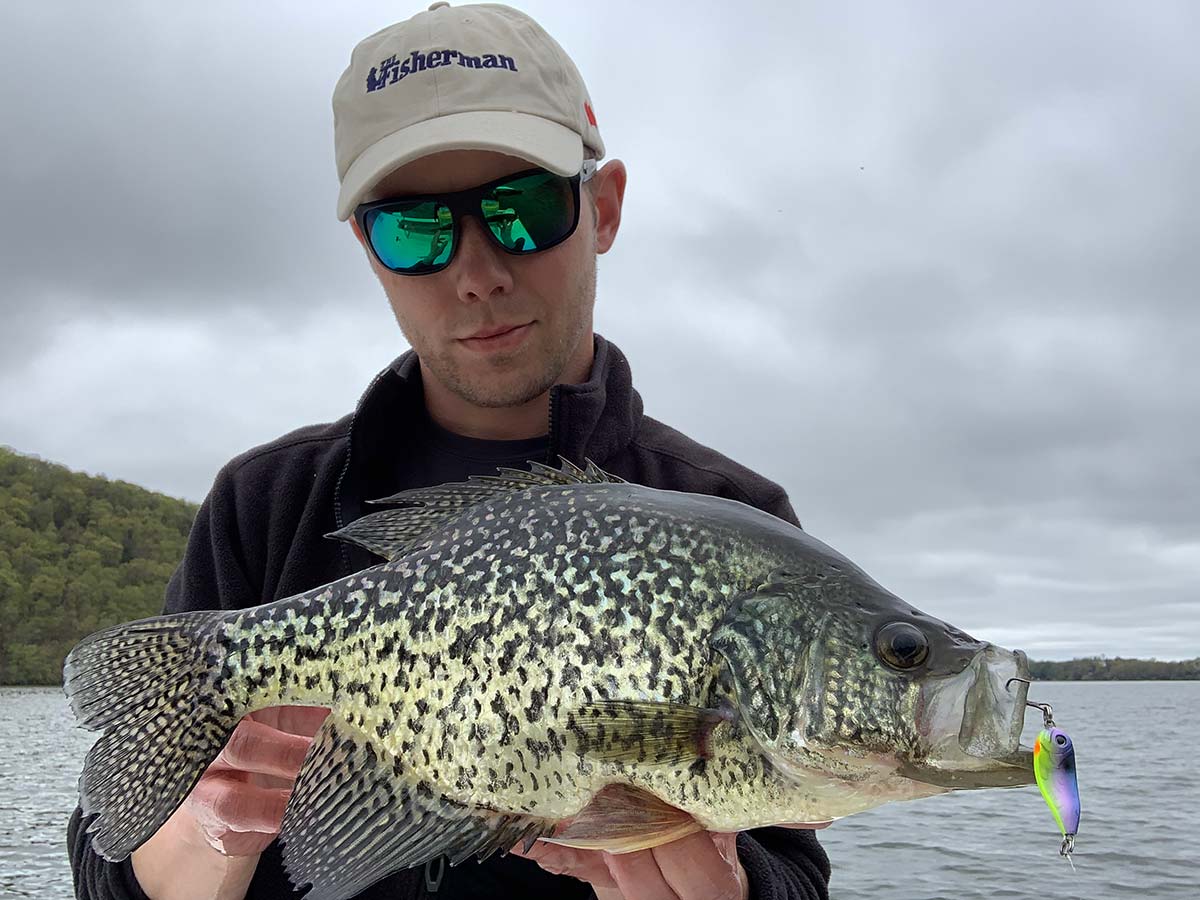
Call them what you want, calicos or crappie, but mid to late spring is primetime for targeting the spawn.
The spawn happens at different times depending on where you are. Here in my home state of Connecticut it usually takes place in late April through May. I fish hard for them all April long because the prespawn bite can be absolutely wild. Wherever you are, things get going once the water temps hit 50 degrees. It is at that point that the fish begin to move in and stage. Fishing any structure such as dock systems, stonewalls, rock piles…etc. with adjacent flats will produce. Shallower water warms faster and fish will be there first. While crappie set up they will continue to gorge themselves as much as possible. They like to cruise those flats chasing bait but they definitely orient themselves with the structure for cover. That is their holding area and those flats are their hunting grounds. These nearby flats are usually the distance of a football field away.
In general the best time for crappie fishing is usually the low light periods. I prefer to fish after dark because those true giants tend to slip up more once the lights go out. These fish will feed more heavily from sundown to sunup. Their very large eyes are tuned to stalking baitfish in the shallows. Their forage is at a disadvantage after dark and can easily be ambushed. As temps get upwards of 60 degrees the fish will initiate the spawn.
Crappie are interesting because they do not display the same behaviors when they spawn as other fish like bluegill do. They generally choose slightly deeper water with heavy cover. Thick weedbeds, lily pads and even submerged timber all provide that necessary cover. Males move in and establish their spawning areas. They then begin to fan out beds, you will know if you catch a male because of how dark they are in comparison to the lighter, chubbier females. The ladies tend to sit just on the outside edge of this action for a little bit longer.
Once temps are in the mid-60s… it’s on. The females will move into these spawning grounds and onto a newly constructed bed. Males corral females into their area and push them over the bed as they do their dance, once the deed is done the males will guard the nest while the eggs incubate. It can take a few days to a week for the fry to hatch depending on temperature. Unstable spring weather is always a variable to take into consideration when tracking the spawn. While this process takes place, daddy has to fend off intruders of any kind while constantly fanning the eggs. Every spring I see a few floaters after the spawn. This whole process can be extremely stressful on older fish. Sometimes to the point where they will spawn out one last time and die.
Having the right gear to target some serious slabs is important. These fish can be extremely aggressive prespawn to where they will hit a 5- to 6-inch bait. But as they get closer to spawning they can get quite finicky and you’ll need to dial it in a bit. I’m a fan of smaller baits for crappie. I like to go for 1- to 2-inch presentations and it really is all about how you work it. These fish can be awfully particular at times and it’s frustrating. I use a variety of the Micro Finesse soft plastics from EuroTackle on their Soft-Lock jigheads ranging from 1/32 to 1/8 ounce. Their Live Spoon in the 1/16oz size has also been a killer for me. It is a hybrid casting/jigging spoon that flutters and also rattles.
If you find yourself catching a few fish but, feel like the bite is slow, trying downsizing to decrease the sink rate of you lure, this will often heat things up quick! The fish are there but you might have to tinker a bit to figure them out. Another great way to find numbers of fish is jigging boat slips. I like to pick at them and slowly sweep a B-Vibe from EuroTackle to cover more water—fish every slip—some hold more than others. I’ve occasionally found giants hiding in plain sight. No cover or anything, just camouflaged out in the open. The spawn can drag on a bit or happen seemingly in the blink of an eye. It is really all dependent on how hot it gets. So pay close attention to water temperature because the action can be great but all it takes is a few very hot days to force the spawn and it’s over.



